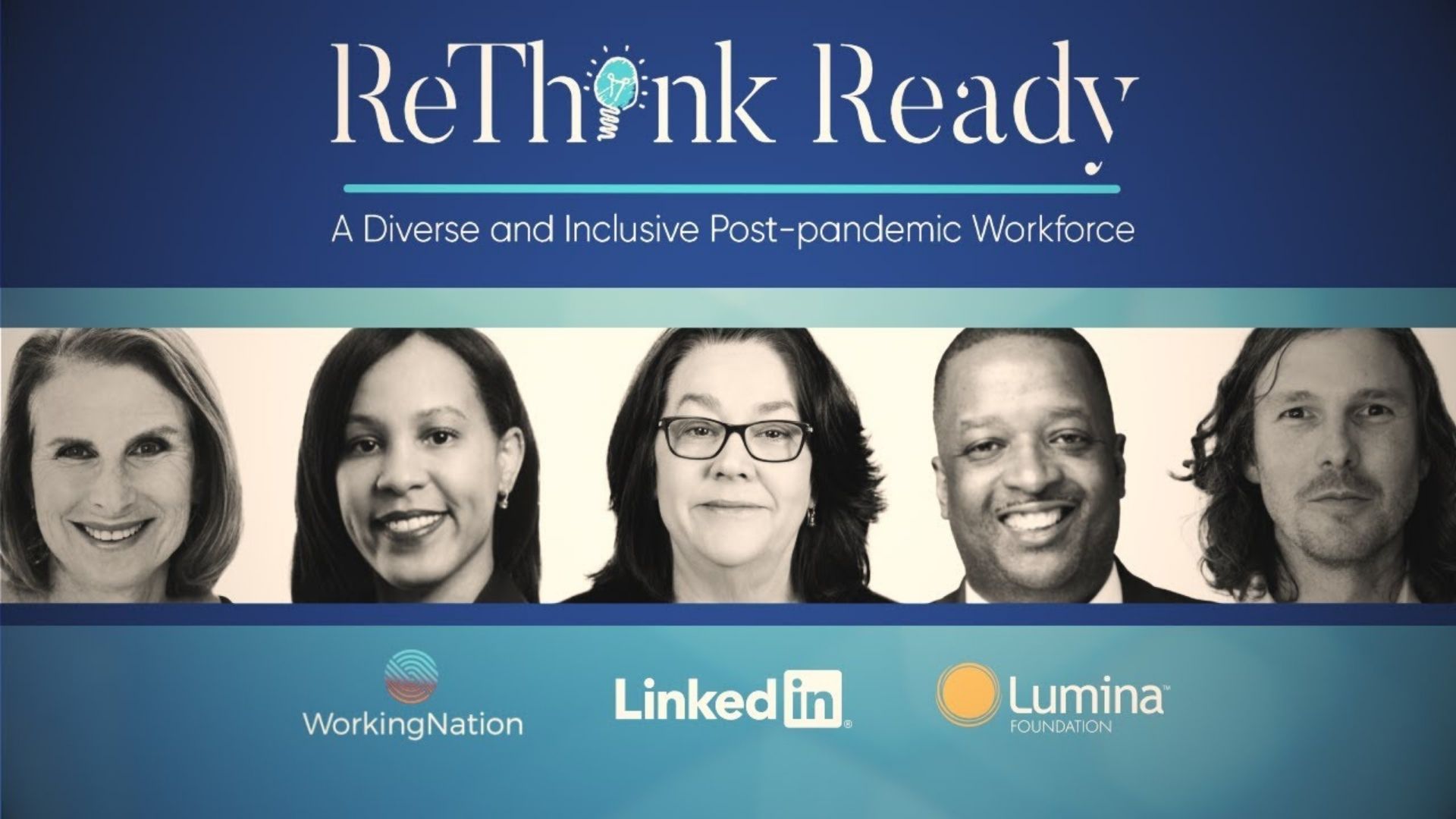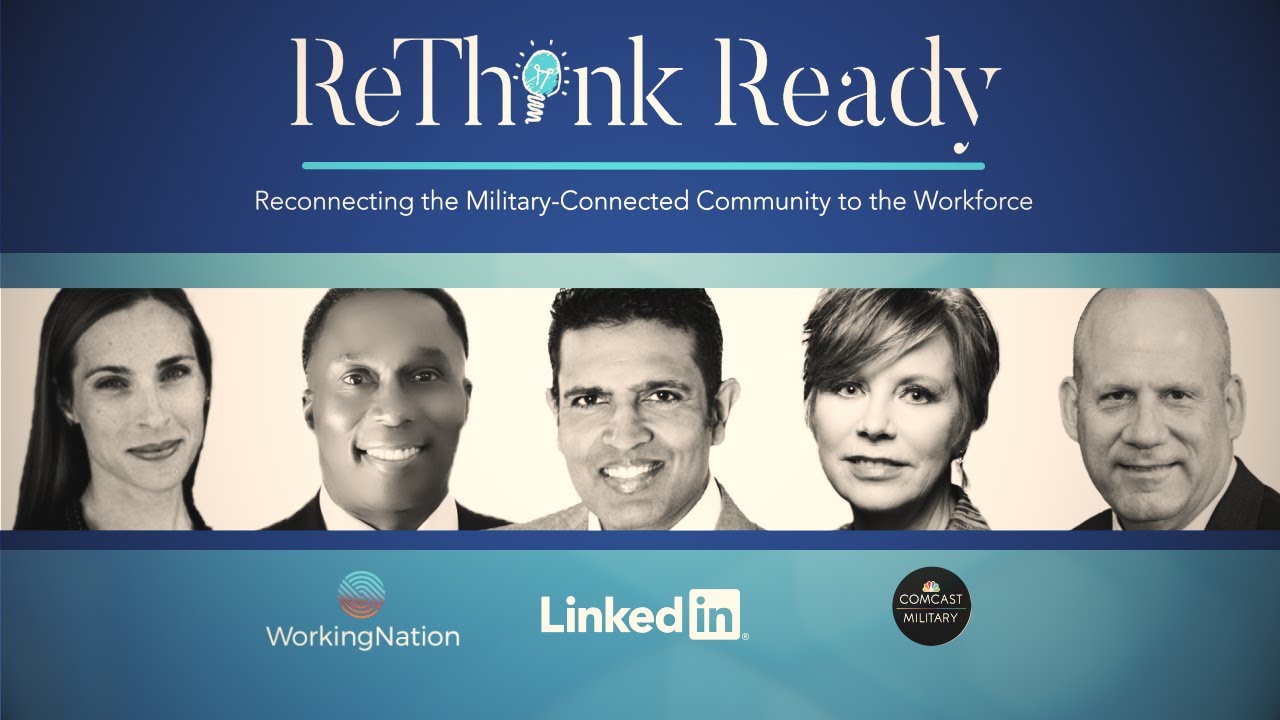Over the past two years, there’s been a raised awareness around inequity in the workplace and society as a whole. Questions continue to be raised as to how to improve diversity and inclusion in the hiring process to ensure that every person – regardless of race, color, gender, sexual preference, age, education level, or economic status – has an opportunity to share in a post-pandemic economic recovery. Additionally, the question remains, how do you ensure that the effort doesn’t stop at the entry level and that there is a clear path to retention and growth within a job and career for everyone?
WorkingNation and LinkedIn recently brought together nonprofit, business, and government leaders to discuss the importance of addressing this important issue head on. We examine longstanding barriers to entry and efforts and initiatives that are moving equal access for all forward.
Meet the Panelists and Our Moderator:
- Lorraine Hariton, Catalyst, President & CEO
- Gary A. Officer, Center for Workforce Inclusion, President & CEO
- Neferteri Sickout, City of Philadelphia, Chief Diversity Officer
- Thomas Sexton, LinkedIn, Senior Director of Global Diversity and Belonging
- Moderator: Ramona Schindelheim, WorkingNation, Editor-in-Chief
Seizing an Opportunity
“There’s a real opportunity coming out of this pandemic to really change things for the better. The pandemic has really laid bare the big inequities that we have in society,” says Lorraine Hariton, president and CEO of Catalyst.
She adds, “On the other hand, we’re in a world where there’s a war for talent going on now. There’s a much better understanding of these inequities and companies are really trying to lean into that.”
Remote work has become widely accepted during the pandemic, but it doesn’t reach everyone in the workforce. “The debate in the workforce space is about technology, hybrid, virtual, you name it,” says Gary A. Officer, president and CEO at the Center for Workforce Inclusion (CWI).
“That doesn’t apply to retail workers. It doesn’t apply to restaurant workers. A monolithic band-aid approach to this issue may not be the solution. Adapting strategy to meet the needs of different segments of the workforce may just be the way to go. We’ve got to make sure that we advocate for a resource model that captures the needs of not just every community, every gender, every racial profile, but folks across the age spectrum.”
Regarding the older worker, Officer says, “By the year 2025, older Americans will represent the largest single segment of the U.S. workforce. Twenty-five percent of the U.S. workforce will be 50 and over. What are we doing to ensure that they will enjoy the opportunity to engage, survive, and thrive?”
Thomas Sexton, senior director of global diversity and belonging at LinkedIn says it’s important for companies to ask, “Why is diversity, inclusion, and belonging important for your organization, specifically? By tying the objective of diversity and inclusion to what you’re trying to accomplish already as an organization gives that work much more staying power.”
He continues, “Thinking about how you are educating your manager population is so incredibly important, beginning with clarifying for them what it means to be an inclusive leader within your organization, and then giving them the tools to help develop those skills.”
Addressing company culture, Officer adds, “When we talk about diversity and inclusion, it’s not a bottom-up phenomena. It starts at the top. It starts in the boardroom. It starts in the C-suite. Leadership sets the example.”
Differences Between Equity, Diversity, and Inclusion
As chief diversity officer for the City of Philadelphia, Neferteri Sickout says, “In local government, workforce equity means that your workforce reflects the representation or the composition of the city in terms of race, ethnicity, gender, and, and so forth.”
Sickout notes, “In thinking about equity, it’s a little bit different from diversity and inclusion. When you have diversity, you’re really thinking about the composition of your workforce. When you’re thinking about inclusion, you’re thinking about culture, behavior, and belonging.”
“When you think about equity, you’re really looking at policies, procedures, and programs, and how the processes around your policies and your programs may be inconsistent, unfair, and have a disproportionate impact on your employees. And in some cases, unintentionally maintain existing disparities.”
Sickout offers the example of a recreation leader for the city’s Department of Parks and Recreation. “There were a good number of applicants who were dropping out of the hiring pathway because of the civil service exam they have to take to be hired. It was a written exam. Exams don’t necessarily depict who’s the best qualified candidate for a job. You could just be a great test taker. You could be a poor test taker. So, the commissioner of that department changed the written exam to an oral exam.”
Changing how the test is administered increased the top test takers in terms of race, ethnicity, and gender, notes Sickout.
Navigating the Workforce Landscape
“I often recommend to people that are thinking about any kind of career crossroads, that could be re-entering the workforce, that could be making a career shift, is think about the power of an informal conversation. That can take the form of finding somebody within your network. It could be using a platform like LinkedIn to find a friend of a friend who might be part an industry that you want to become a part of,” says Sexton.
“Begin to have those informal conversations, understanding what skills it takes to get a new job. You can understand what types of skills you may already have and how you represent them in a way that will land with a potential employer.”
Officer says expand beyond the familiar, “Look in places that you would not have ordinarily explored, but where your skills may transfer.”
‘A shared commitment’
Sickout says the work in the DEI space is challenging. “It is hard. It can be tiresome. I say that because you’re seeking to disrupt the status quo. How do you re-fashion something? How do you take something apart and put it back together to make it more equitable?”
“It’s the right work, but it takes an extra level of intentionality. It takes an extra level commitment…and it’s very necessary that it’s a shared commitment.”








